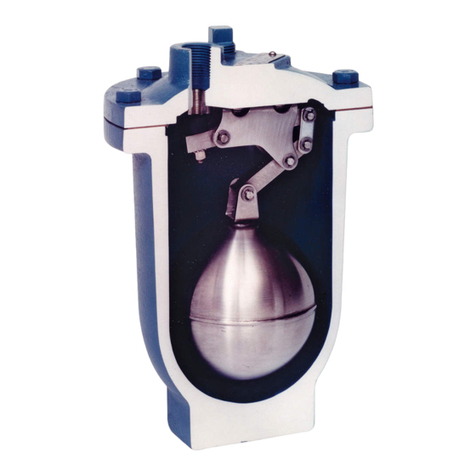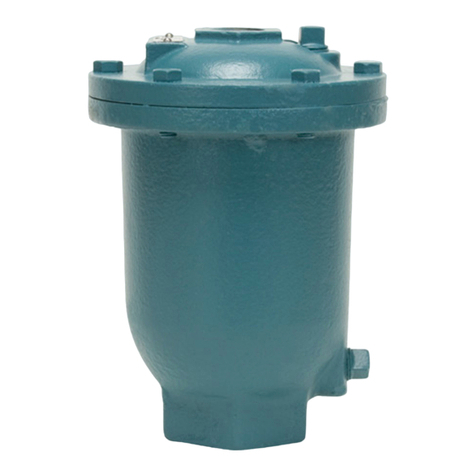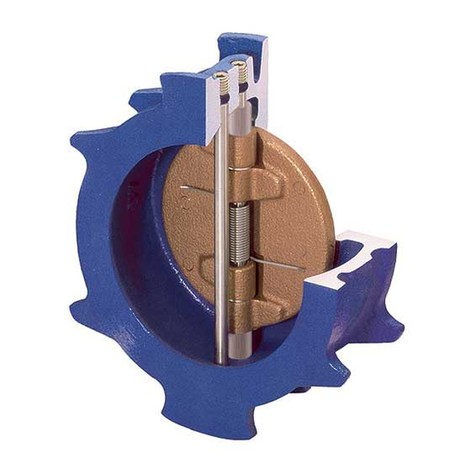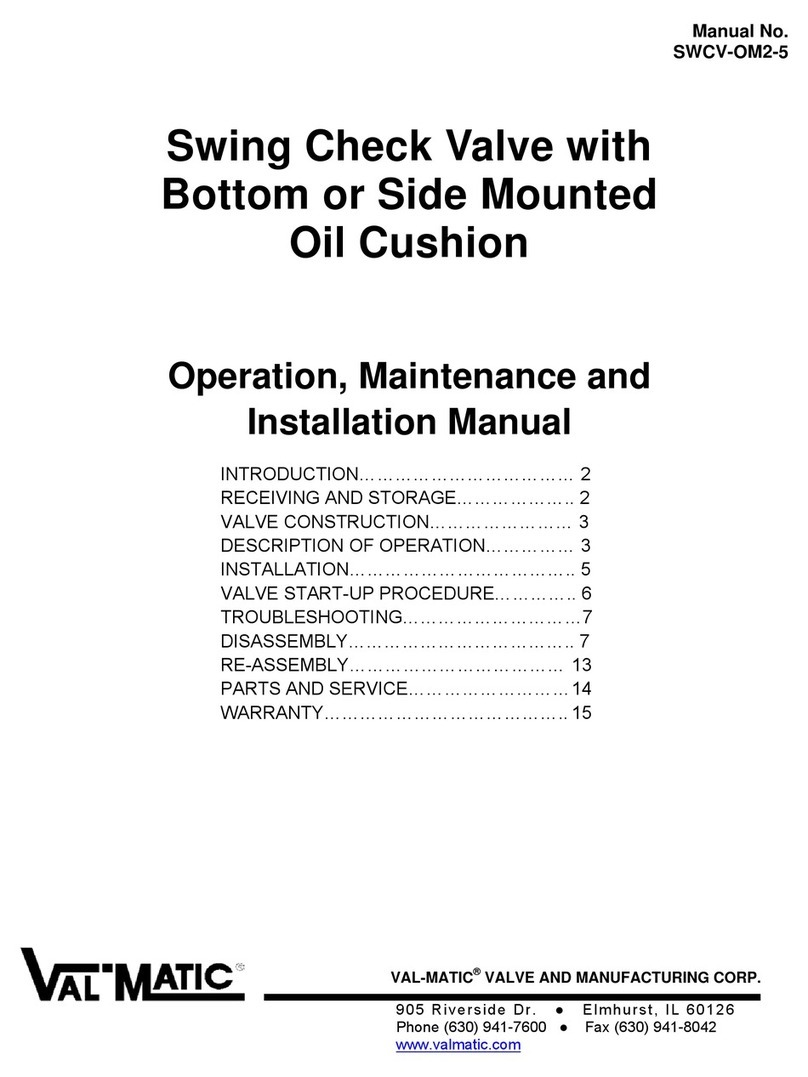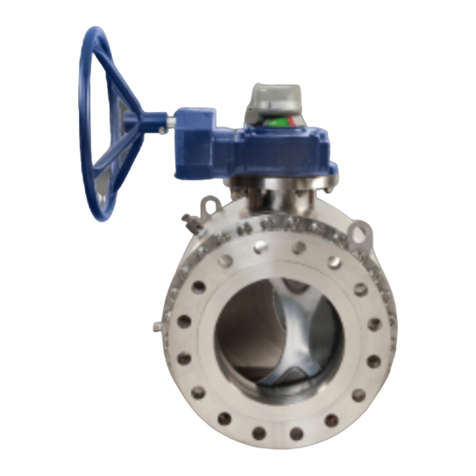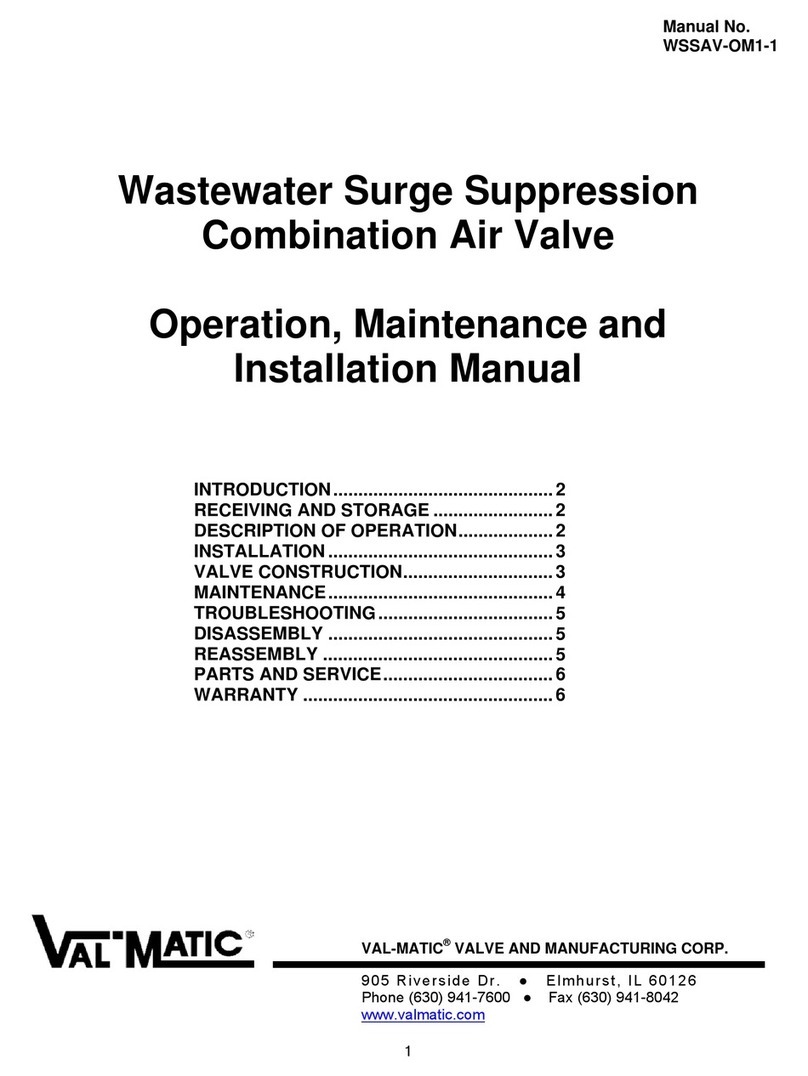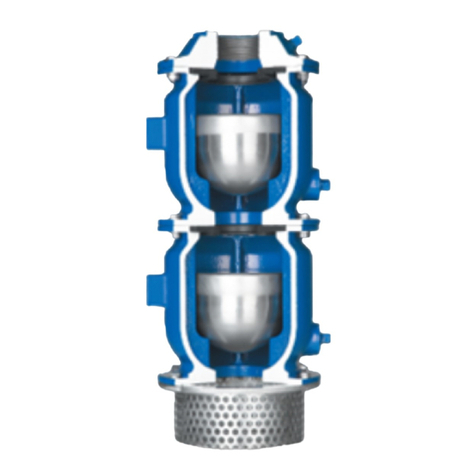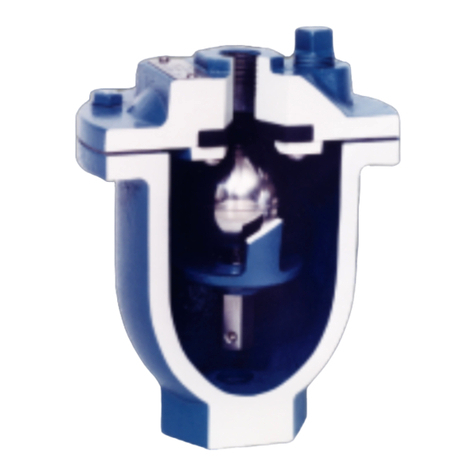
4
WARNING
The valve must be drained before removing the
cover or pressure may be released causing
injury.
TROUBLESHOOTING
Several problems and solutions are presented below
to assist you in troubleshooting the valve assembly
in an efficient manner.
Leakage at Bottom Connection: Tighten valve
threaded connection. If leak persists, remove
valve and seal threads with Teflon* sealant.
Leakage at Cover: Tighten bolts per Table 2,
replace gasket.
Valve Leaks when Closed: Backwash valve to
remove debris. Disassemble and inspect seat,
orifice button, and float. NOTE: Many floats
contain sand for weight but if water is detected,
replace float.
Valve not Venting Air: Check that operating
pressure does not exceed Working Pressure on
nameplate. Backwash valve.
DISASSEMBLY
The valve can be disassembled without removing it
from the pipeline. Or for convenience, the valve can
be removed from the line. All work on the valve
should be performed by a skilled mechanic with
proper tools. No special tools are required.
1. Close inlet shut-off valve. Open drain valve or
remove drain plug. Remove the cover bolts (7)
on the top cover.
2. Pry cover (2) loose and lift off valve body.
3. Remove the 2 retainer rings (13) and pivot pins
(12) that pass through the lever frame (3). The
float (5) and linkage will be free from the cover.
Disconnect float from lever (10).
DISASSEMBLY (Cont'd)
4. To remove lever frame (3), remove two round-
head fasteners (8). Rotate seat (4) counter-
clockwise to remove.
5. Remove locknut (18) and orifice button (11) from
orifice button arm (22).
6. Clean and inspect parts. Note: some floats
contain sand for extra weight; if water is detected,
replace float. Replace worn parts as necessary.
REASSEMBLY
All parts must be cleaned and gasket surfaces
should be cleaned with a stiff wire brush in the
direction of the serrations or machine marks. Worn
parts, gaskets and seals should be replaced during
reassembly. Refer to Figure 2 on page 2.
1. Apply Loctite PST thread sealant to seat (4) and
assemble to cover with maximum torque of 10 ft-
lbs; DO NOT OVER-TORQUE.
2. Assemble lever frame (3) to cover over locating
pin (21) in cover. Secure with screws (8) and
washers (30).
3. Install new orifice button (11) flush to arm (22).
Assemble lockwasher (34) and locknut (18) over
orifice button but do not tighten.
4. Connect arms (10 & 22) and assemble to lever
frame (3) with four pivot pins (12) and retaining
rings (13); rings should snap over pins.
5. Adjust orifice button (11) so that orifice button
arm (22) slopes away from cover about 1/16"
when resting gently against seat (4). Secure
button by tightening lockwasher (34) and nut
(18).
6. Attach float (5) and guide shaft (20) by installing
last pivot pin (12) into lever frame (3). Float
should move freely pressing the orifice button
(11) against the seat (4) when pushed upward.
Verify that all retainer rings (13) are properly
secured.
